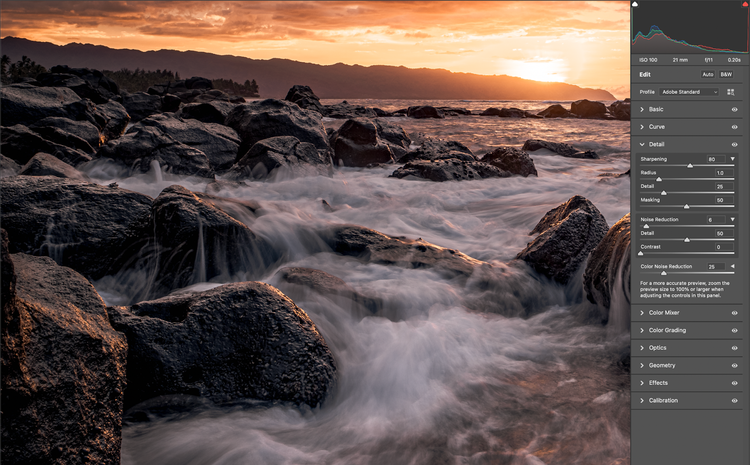Mastering the Art: Current Photography Techniques and Emerging Trends

31-12-2024, 02:13 Admin 4 105 0
In an era marked by the rapid evolution of technology, the area of photography is not just confined to simple point-and-shoot methods anymore. The enticing blend of artistry and science present in photography continues to re-endow the world with a unique perspective. This article aims to delve into contemporary photography techniques and forecast emerging trends, focusing on how modern tools and resources can bolster efficiency in capturing extraordinary moments.
Let’s start by exploring High Dynamic Range (HDR) photography - a pioneering technique that enables capturing a greater range of luminosity by blending several shots. With the advent of smartphones embracing HDR capabilities, skilled individuals can create seamlessly detailed photographs, exhibiting textures and tones that a single exposure image would fail to capture. For instance, Google Pixel's Night Sight employs HDR and AI techniques in unison, offering outstanding low light photos - pushing the boundaries for mobile photography.
Another progressive photographic method is Aerial or Drone Photography. Drones have disrupted the photographic industry, providing bird's-eye-view shots previously reserved to satellite photos. Drones like the DJI Mavic Air 2 come with high-resolution cameras and Intelligent Flight Modes such as FocusTrack, making capturing dynamic, cinematic shots easier than ever. Furthermore, drones have not only made aerial shots more accessible but also more efficient - quicker set-up times, lower costs, and lesser risks than traditional helicopter shots.
Moving away from traditional stills, 360-degree Photography has revolutionized the industry, offering an immersive experience to viewers like never before. This technique essentially stitches multiple photos into a single spherical image, granting viewers the ability to explore the photo from every angle. Real estate and tourism industries have been notably quick to integrate this technology, boosting customer engagement. Companies like Ricoh Theta have produced dedicated 360-degree cameras, making this technique more achievable for photographers.
Let's preview the possible future of photography: Computational Photography. This emerging trend uses advanced software to enhance or extend the capabilities of digital photography, often compensating for hardware limitations. Google's 'Super Res Zoom' feature can be regarded as a pioneer in computational photography; it uses machine learning to create high-resolution zoomed shots by combining many lower-resolution versions, which, earlier, only superior camera hardware could achieve.
Another prospective trend in photography could be the virtual reality (VR) and augmented reality (AR) integration. This would involve creating more interactive and engaging photos where the viewer might be able to animate certain elements, change viewing angles remotely and maybe even 'enter' the photograph.
Photography, as an art form, is constantly evolving, fueled by rapid technological advancements. From HDR to drones, 360-degree photos, and computational photography, each technique and trend calls for building new sets of skills. As we peer into the future, embracing these continuous developments is pivotal to master the art of photography in modern times. The accessibility and efficiency of current and emerging technologies are transforming the field, allowing us to explore new creative horizons unimaginable a few decades back.
Let’s start by exploring High Dynamic Range (HDR) photography - a pioneering technique that enables capturing a greater range of luminosity by blending several shots. With the advent of smartphones embracing HDR capabilities, skilled individuals can create seamlessly detailed photographs, exhibiting textures and tones that a single exposure image would fail to capture. For instance, Google Pixel's Night Sight employs HDR and AI techniques in unison, offering outstanding low light photos - pushing the boundaries for mobile photography.
Another progressive photographic method is Aerial or Drone Photography. Drones have disrupted the photographic industry, providing bird's-eye-view shots previously reserved to satellite photos. Drones like the DJI Mavic Air 2 come with high-resolution cameras and Intelligent Flight Modes such as FocusTrack, making capturing dynamic, cinematic shots easier than ever. Furthermore, drones have not only made aerial shots more accessible but also more efficient - quicker set-up times, lower costs, and lesser risks than traditional helicopter shots.
Moving away from traditional stills, 360-degree Photography has revolutionized the industry, offering an immersive experience to viewers like never before. This technique essentially stitches multiple photos into a single spherical image, granting viewers the ability to explore the photo from every angle. Real estate and tourism industries have been notably quick to integrate this technology, boosting customer engagement. Companies like Ricoh Theta have produced dedicated 360-degree cameras, making this technique more achievable for photographers.
Let's preview the possible future of photography: Computational Photography. This emerging trend uses advanced software to enhance or extend the capabilities of digital photography, often compensating for hardware limitations. Google's 'Super Res Zoom' feature can be regarded as a pioneer in computational photography; it uses machine learning to create high-resolution zoomed shots by combining many lower-resolution versions, which, earlier, only superior camera hardware could achieve.
Another prospective trend in photography could be the virtual reality (VR) and augmented reality (AR) integration. This would involve creating more interactive and engaging photos where the viewer might be able to animate certain elements, change viewing angles remotely and maybe even 'enter' the photograph.
Photography, as an art form, is constantly evolving, fueled by rapid technological advancements. From HDR to drones, 360-degree photos, and computational photography, each technique and trend calls for building new sets of skills. As we peer into the future, embracing these continuous developments is pivotal to master the art of photography in modern times. The accessibility and efficiency of current and emerging technologies are transforming the field, allowing us to explore new creative horizons unimaginable a few decades back.
Related News
Leave a Comment

